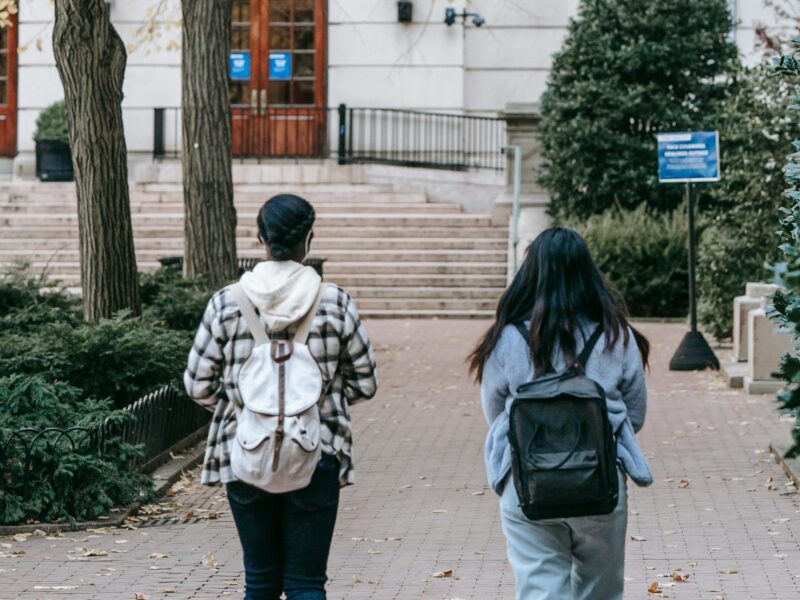The Student Loan Repayment Clock is Ticking Again
The Student Loan Repayment Clock is Ticking Again: The Student Loan Repayment Clock is Ticking Again, the Student Loan Repayment Clock is Ticking Again, after an unprecedented two-year pause due to the COVID-19 pandemic, federal student loan payments, interest, and collections are scheduled to resume on January 1, 2023. This will have major financial impacts on millions of student loan borrowers across the country.
This comprehensive guide explores the details around the upcoming resumption of payments, implications for borrowers, and options available to help manage student debt going forward. Understanding these changes is crucial to avoid repayment shock and have a plan in place.
Let’s dive into what January means for student loan holders and how to prepare for this transition. Your journey towards repayment readiness starts here.
The Payment Pause Timeline
On March 13, 2020, payments on federal student loans were initially suspended through September 30, 2020 due to the pandemic. This “payment pause” was then extended multiple times:
– Through January 31, 2021
– Through September 30, 2021
– Through January 31, 2022
– Through August 31, 2022
– Through December 31, 2022
With no further extensions from the Biden Administration, payments are now scheduled to restart in 2023.
Impacts on Borrowers
Starting January 1, 2023:
– Monthly bills will be due again on federal Direct Loans and FFEL loans held by the DOE.
– Interest will begin accumulating once more on non-income driven repayment plans.
– Collections like wage garnishment and tax refund seizures will pick back up for defaults.
– Automatic payments set up before the pause will be restarted unless adjusted.
Over 40 million Americans with student debt will feel increased financial burdens.
Options for Repayment
Borrowers have choices to manage what’s owed, like:
– Income-Driven Repayment plans capping payments at 10-20% of discretionary income.
– Switching to lower payment terms by consolidating multiple loans.
– Public Service Loan Forgiveness after 120 qualifying monthly payments while working for a qualified employer.
– Economic Hardship Deferments or Forbearances pausing payments temporarily with interest accrual.
With strategic planning, savvy options tailor repayment manageable.
Tips for Preparing
To avoid shock in January, take steps now like:
– Update your contact info on StudentAid.gov for seamless communication.
– Review and adjust your planned repayment approach if needed.
– Restart savings if possible to build an emergency cushion including higher monthly bills.
– Consolidate or enroll in an income-driven plan for flexible protection.
With advanced notice, you’re empowered taking control of your debt destiny.
While payments resuming will bring new challenges, many options available light the solution path. Your journey to repayment readiness starts today – let’s map the smart strategy for you.
The Origins of the Student Loan Crisis
To understand the impact of the repayment clock ticking once again, it’s helpful to first examine how we arrived at this point. The student loan crisis did not emerge overnight but is rather the result of decades of policies, economic trends, and a cultural shift toward higher education as the key to success in the modern workforce.
The history of federal student loans dates back to the 1960s, with the creation of the Guaranteed Student Loan Program. Initially designed to make higher education more accessible to working-class families, this program eventually expanded into what we now know as federal student loans. Over time, the federal government increased its lending capacity, and private institutions also began to offer loans to students. As the cost of education soared and wages stagnated, students turned to loans as a primary means of affording their college degrees.
The price of college education has risen significantly since the 1980s. According to the College Board, tuition fees at public universities more than tripled over the past 30 years, even when adjusted for inflation. Meanwhile, the real wages for most college graduates have not kept pace with this rise. As a result, many students had no choice but to take on more debt to pursue higher education, believing that a degree would ensure a stable job with a decent salary.
However, in reality, the job market for recent graduates has not always delivered on this promise. The 2008 financial crisis and subsequent recession hit young professionals hardest, and many students found themselves saddled with high student loan debt while entering an uncertain job market. Despite the recovery in the economy, wages for recent graduates have remained relatively stagnant, and student loan debt has continued to increase.
The Impact of the COVID-19 Pandemic on Student Loan Repayments
The COVID-19 pandemic, which brought about widespread economic disruptions, offered some relief to borrowers who had been struggling with their student loan repayments. In March 2020, in response to the pandemic’s economic strain, the U.S. government placed a pause on federal student loan payments. This relief was initially intended to last for several months but was extended multiple times, eventually lasting until the end of 2022.
For borrowers, the pause was a welcome break. The moratorium on student loan repayments allowed many to regain their financial footing as they faced job losses, reduced incomes, and other pandemic-related financial hardships. The freeze on payments also included a suspension of interest accrual, meaning that borrowers’ loan balances did not increase during this time.
The pause allowed borrowers to reassess their financial situations, consider repayment options, and even save money. Some individuals used the opportunity to build emergency savings, pay off other forms of debt, or invest in personal development.
However, despite the temporary relief, the question of what would happen when repayments resumed remained a looming concern. Would borrowers be able to manage payments once again? Would the freeze be extended indefinitely? Could borrowers expect further relief or even forgiveness for a portion of their loans?
The Resumption of Student Loan Repayments
After a prolonged pause, student loan repayments officially resumed in January 2023. For many borrowers, this signaled the beginning of a new financial challenge. Payments began to be due again, and interest started to accumulate once more. The months-long hiatus had provided a temporary reprieve, but now borrowers were faced with the reality of meeting their obligations once more.
The resumption of repayments has placed a significant burden on those who were already struggling with high levels of debt. According to a survey conducted by the Federal Reserve Bank of New York, approximately 40% of student loan borrowers were behind on their payments even before the pandemic. The resumption of payments only intensified the pressure for these individuals, many of whom remain in financial distress.
At the same time, the economic environment remains challenging. Inflation, rising housing costs, and a potential recession have compounded the financial difficulties faced by many Americans. For borrowers who have not seen wage growth or employment opportunities improve significantly during the pandemic, the resumption of student loan payments presents a serious hardship.
Potential Solutions and Options for Borrowers
Despite the daunting nature of resuming student loan repayments, there are options available for borrowers to manage their loans effectively. It’s important for borrowers to fully understand the relief options and repayment plans available to them in order to make informed decisions.
Income-Driven Repayment Plans
One of the most important options for borrowers is the income-driven repayment (IDR) plan. These plans base borrowers’ monthly payments on their income and family size, making them an appealing option for individuals facing financial hardship. There are several types of IDR plans, including Income-Based Repayment (IBR), Pay As You Earn (PAYE), and Revised Pay As You Earn (REPAYE).
Under these plans, monthly payments can be as low as $0 for borrowers with very low or no income. While payments are typically capped at 10% to 20% of the borrower’s discretionary income, the downside is that the repayment period is longer (usually 20 to 25 years), and borrowers may end up paying more in interest over time.
For many borrowers, IDR plans offer some relief, but it’s important to note that these plans may not fully resolve the financial burden. However, they can make monthly payments more manageable, reducing the risk of default.
Public Service Loan Forgiveness (PSLF)
For individuals working in public service jobs, such as government, nonprofit, or teaching positions, the Public Service Loan Forgiveness (PSLF) program offers a potential path to loan forgiveness. Under the PSLF program, borrowers who work in qualifying public service jobs and make 120 qualifying monthly payments under an income-driven repayment plan can have their remaining loan balance forgiven.
While the PSLF program can provide a significant benefit for public service workers, it has been the subject of criticism due to bureaucratic challenges, and many borrowers have reported difficulties in qualifying. However, recent reforms to the PSLF program, including a temporary waiver that allows certain payments to count toward forgiveness, have made the program more accessible to borrowers who were previously excluded.
Student Loan Forgiveness Proposals
There has been ongoing debate in the U.S. about whether the federal government should offer widespread student loan forgiveness. President Joe Biden’s administration has proposed forgiveness for borrowers, especially those with lower incomes or significant financial distress. While plans for broad student loan forgiveness have been challenged in court and faced resistance from some lawmakers, the idea remains a key topic in political discourse.
In August 2022, the Biden administration announced a plan to forgive up to $20,000 for Pell Grant recipients and $10,000 for other borrowers earning less than $125,000 annually. While the fate of this plan remains uncertain due to legal challenges, such proposals could provide relief for millions of borrowers if they become a reality.
The Bigger Picture: The Impact of Student Loan Debt on Society
Student loan debt is not just a personal financial burden; it also has a wider economic and societal impact. High levels of student debt influence homeownership rates, marriage rates, and even the ability to start a family. Many young people are delaying major life decisions due to the weight of their student loans.
The challenge of student debt also affects the broader economy. As borrowers struggle to pay down loans, they may have less disposable income to spend on goods and services, which can affect economic growth. Additionally, the rising cost of higher education and the increasing reliance on loans to pay for it contribute to income inequality, as individuals from lower-income families are disproportionately affected by debt.
Conclusion
The Student Loan Repayment Clock is Ticking Again, as the student loan repayment clock ticks once more, borrowers face a challenging and uncertain road ahead. The resumption of payments highlights the ongoing struggle millions of Americans face as they attempt to pay down an ever-growing mountain of debt. While there are options available to ease the financial burden, such as income-driven repayment plans and student loan forgiveness programs, these solutions may not be enough to fully resolve the crisis.
In the larger context, the student loan crisis underscores broader issues related to the cost of education, wage stagnation, and the economic pressures placed on young people. The resumption of loan payments is just one chapter in an ongoing story about how higher education is financed in the United States and what should be done to address the growing burden of student debt.
As borrowers confront this new reality, it’s clear that the need for comprehensive reform to address the student loan crisis is more urgent than ever. Until that reform comes, millions of Americans will continue to grapple with the financial challenges of student debt as they navigate their way through an increasingly complex economic landscape.






